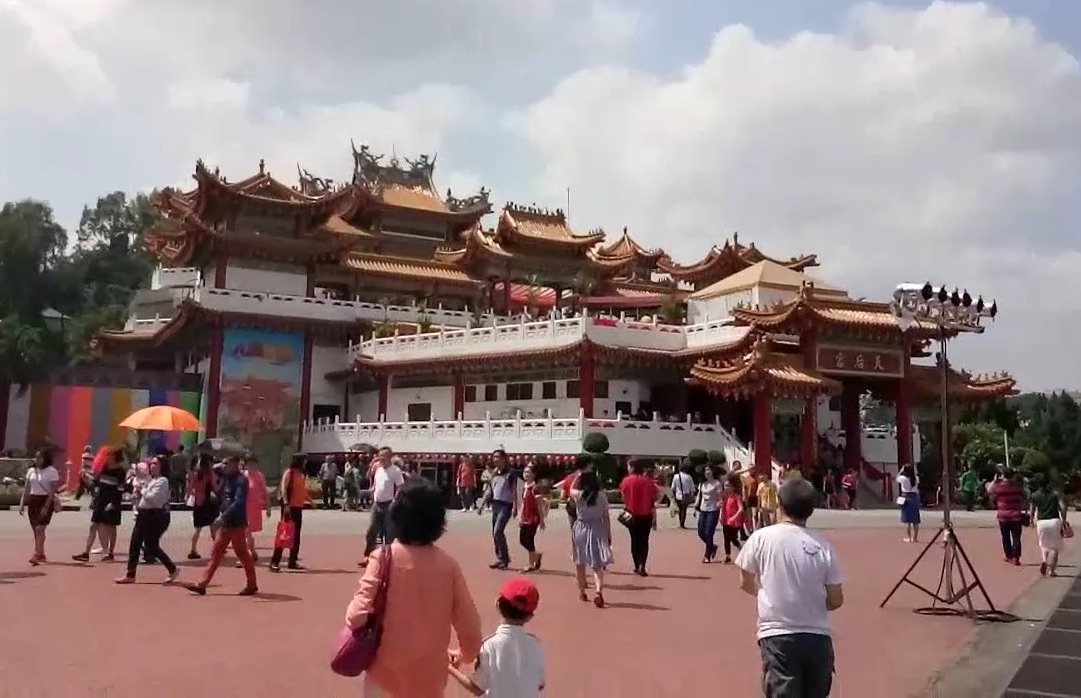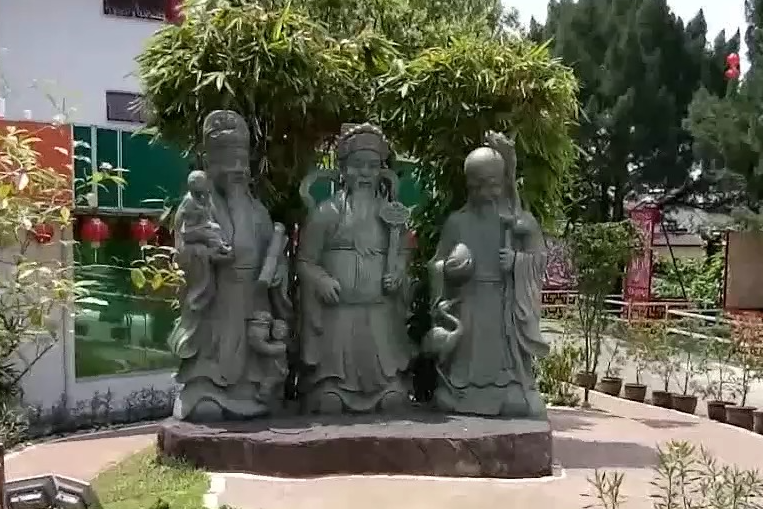TEMPLE OF HEAVENLY QUEEN, KUALA LUMPUR

Temple of Heavenly Queen
On the 4th day of Chinese New Year, i.e. on 8th February 2019, my wife, Siew Foong, Nyet Choon, Rowan and me visited the Heavenly Queen Temple, or "Thien Hou Kung" in Chinese, in Kuala Lumpur. It is a famous temple in the city, full of Chinese culture. On that day it was full of people.
At the majestic temple, first we went to the Park of Chinese Astrology where people born of different years are represented by different zodiac animals, which are rat, buffalo, tiger, rabbit, dragon, snake, horse, goat, monkey, cockerel, dog and pig.
I was particularly interested in my zodiac animal, the monkey. At the foot of a pair of monkeys was a plate showing the qualities of the monkey, which were being intelligent, aspiring, confident, prudent, honest, energetic, sensitive, talented, creative and competitive. I fancied that I had all these qualities.
Next to the Chinese Astrology Park was a bonsai platform showing a variety of cultivated, small trees. Nearby were four large boards showing the four seasons, namely spring, summer, autumn and winter.
Spring was represented by a variety of dishes, indicating Chinese New Year, which is the most celebrated festival in the Chinese calendar. Summer was represented by a dragon boat, indicating the Dragon Boat Festival, which occurs on the summer solstice.
Autume is represented by a large moon cake, indicating the mid-autume festival which occurs on the 15th day of the 8th month of the lunar calendar with a full moon at night, corresponding to September of the Gregorian calendar. Winter is represented by a bowl of sweet little balls usually made of flour, indicating the winter solstice.
Then we went to the main gate of the temple. There were stairs leading to the main hall where three dieties were worshopped. In the centre was the Heavenly Queen, On the right as we faced the main building was Guan Yin Bodh Satt, or the Bodhisattva of Great Compassion. On the left was Sacred Mother of Water-Ends.
The Chinese do not make a dfference between Taoism and Buddhism, in fact between any religions. The Heavenly Queen Temple is Taoist, but a Buddhist Bodhisattva is worshipped. In fact, Malaysia in general do not differentiate between religions. It was comforting to note that among the crowd we could find Malays who are Muslim, and Indians who are Hindu. Malaysians celebrate the religion of other people.
Behind the main hall were statues of twenty-four Paragons of Filial Piety. One of the best examples of filial piety is to show love and care to ones parents.
On one side of the temple was a huge ground showing Chinese chess. There are two main kinds of Chinese chess, namely "qiang qi", literally translated as "elephant chess", and "wei qi", literally translated as "surround chess" or popularly called the Go in Western languages. In the past the Go was popular, but now "elephant chess" is popular, so much so that it is often called Chinese chess.
Before leaving the temple, we met the three Gods of Prosperity, Status and Longveity, or Fu, Lu, Shou in Chinese. They represent the qualities any person would aspire to.
Wong Kiew Kit
12th February 2019, Sungai Petani

Fu, Lu, Shou or the Gods of Prosperity, Status and Longevity
LINKS
Travels in Malaysia
